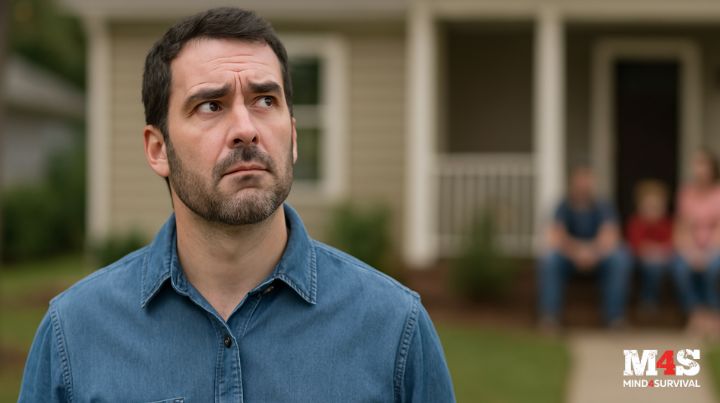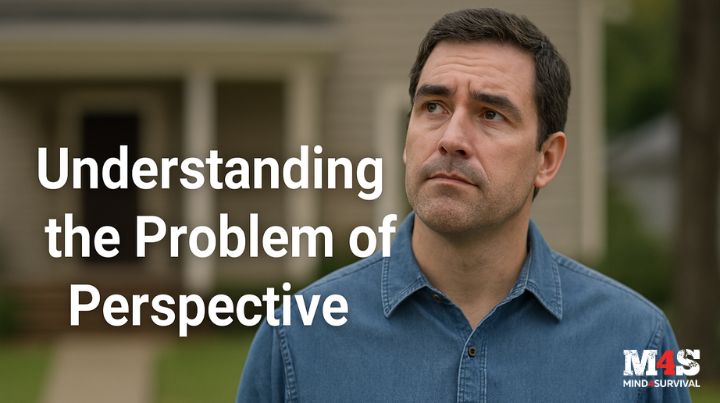Have you ever confidently dismissed a warning because you knew you were right—only to have problems later because you were wrong? Just as driving with sunglasses at night can cause you to miss seeing a hazard in the road, so too can always wearing rose-colored glasses about your opinions and views of the world. In other words, our comfort can blind us to vulnerabilities when everything seems aligned with our beliefs and preferences. This happens after every flip in political power.
Disclaimer: This article is not intended to be political. Instead, it aims to discuss how changing political tides can influence our perspective on preparedness and risk management.
Those whose chosen political leaders or preferred policies are now in control often enjoy a sense of relief and confidence, causing them to lower their guard potentially. Conversely, those whose preferred side lost power frequently shift from comfort to anxiety, now acutely aware of potential threats they previously dismissed. This cyclical pattern of shifting perspectives can dangerously derail both groups if they fail to objectively assess risks and maintain balanced vigilance. Recognizing and consciously challenging this dynamic is essential to genuine preparedness and resilience.
The Problem of Shifting Perspectives
Based on political alignments, people’s perspectives drastically change depending on who holds power. The day before the inauguration, the economy can be described by some as flourishing. Yet, a week later, the same economy might suddenly appear disastrous—only to reverse again with the next political shift.
The acceptance of behaviors like Presidential spending on long weekends and vacations often becomes justified or vilified entirely based on political views. While funding Presidential vacations may be a point of contention with every new administration, it is a symptom of a more significant problem. It illustrates how political shifts can significantly affect personal preparedness and community resilience.
Our emotional well-being is frequently tied to our alignment with those in power. When our alignment is high, we naturally feel secure and confident, making dismissing or overlooking risks easier. Conversely, when alignment is low, heightened anxiety and stress can cloud our judgment, causing overreaction and ineffective decision-making. Both emotional states can compromise our preparedness by fostering complacency or inciting unnecessary anxiety.
The Dangers of Emotional Extremes
When our preferred leaders are in control, we tend to assume that threats have diminished or even disappeared. However, threats do not vanish simply because we feel safe. Ignoring these threats due to comfort can significantly impair our ability to see a problem coming and likewise inhibit our abiality to respond appropriately when issues inevitably arise.
Conversely, sudden anxiety resulting from a shift in political power can create fear-driven decisions, leading to rash actions rather than thoughtful preparedness. Both scenarios—in alignment and relaxed and out of alignment with heightened anxiety—undermine objective analysis and measured response, crucial elements for effective preparedness.
Recognizing and Heeding Early Warnings
People who are not troubled by a situation often dismiss those raising early alarms as alarmists. Interestingly enough, many individuals currently content with the state of things were themselves recently alarmists, warning about threats that seemed critical when the opposing party was in power.
Historically, canaries were the “alarms” of the coal mines. Miners carried canaries into coal mines because they were more sensitive to a lack of oxygen. As with the canaries, alarmists are more sensitive to potential problems. And yes, regardless of which team is playing alarmist, there will always be the occasional exaggeration and click-bait lies. However, that doesn’t make them always wrong.
Practicing balanced preparedness involves carefully evaluating warnings from others without immediately accepting or rejecting them. It’s about investigating their concerns as a hypothesis, as many wish The Jab had been investigated. After all, maybe the people banging the alarm bells are right—but more on that later.
Practical Steps to Refine Your Perspective
Enhancing your preparedness requires consciously challenging and refining your perspective:
Step 1: Actively Engage with Differing Views
Regularly seek out and genuinely listen to perspectives that differ from your own. Understand the underlying fears and motivations without immediately countering or dismissing them. Maybe you can only use 1% of what they have to say. That is still an improvement of your perspective.
Step 2: Evaluate the Credibility of Concerns
Once you’ve heard an opposing viewpoint, objectively evaluate its plausibility. Aside from the personalities and people involved, could the scenario realistically unfold? Are the mechanics there for the problem to happen? Might future conditions increase the likelihood of it happening?
Step 3: Incorporate Valid Concerns into Your Preparedness Plan
Thoughtfully integrate credible scenarios into your preparedness strategy. This doesn’t mean reacting to every concern dramatically, but rather maintaining ongoing awareness and readiness for plausible threats regardless of how at ease we feel with the situations that are in someone else’s control.
Benefits of Actively Refining Your Perspective
Regularly challenging and refining your perspective delivers significant advantages:
- Enhanced Situational Awareness: Can throttle the situational awareness up and down as needed to be aware of potential emerging threats.
- Improved Decision-Making: Objective assessments reduce impulsive, emotionally-driven decisions, leading to more accurate and effective actions.
- Increased Resilience: You become better prepared to respond swiftly and effectively to unexpected challenges.
Current, In Real Life (IRL) Examples
Historical financial crises provide vivid lessons on the risks of ignoring warnings. Often, optimistic populations overlook early warnings of economic downturns, resulting in severe hardships. Case in point, the economy that, in my opinion, was not doing well, may, according to President Trump, experience “a hiccup” before it gets better. What does that mean?
It means that regardless of why, an economy that hasn’t been doing well may have a “hiccup” before it gets better. In other words, it may get worse economically before it gets better. So, if you’re happy with how things are going and have lost sight of your financial preps, look at those again. Likewise, with tempers flaring again, an economic downturn can increase the potential for civil unrest.
The point is, if you’ve eased up on the preparedness gas pedal, you should readjust and reconfirm things. Similarly, if your level of worry and concern has increased, take a step back, and remember you’ve been through this before. As always, we’ll wake up tomorrow, the earth will keep spinning, and it’ll be election season all over again in a little over three years.
The Bottom Line: Taking Action
Refining your perspective isn’t about pessimism or paranoia—it’s about equipping yourself to navigate uncertainty with clarity and confidence. You cultivate informed vigilance by consciously challenging your assumptions and openly considering differing viewpoints. This disciplined approach ensures you’re prepared for the threats you see clearly and those you might otherwise overlook.
Ask yourself:
- Am I dismissing valid concerns because they disrupt my sense of comfort?
- Could embracing different perspectives enhance my readiness to face potential challenges?
By refining your perspective, you empower yourself and your community to confidently and effectively handle future uncertainties. Share your thoughts or experiences on refining your perspective in the comments below—I’d love to hear from you!
Additional Resources:
Stay safe,

Read the full article here




